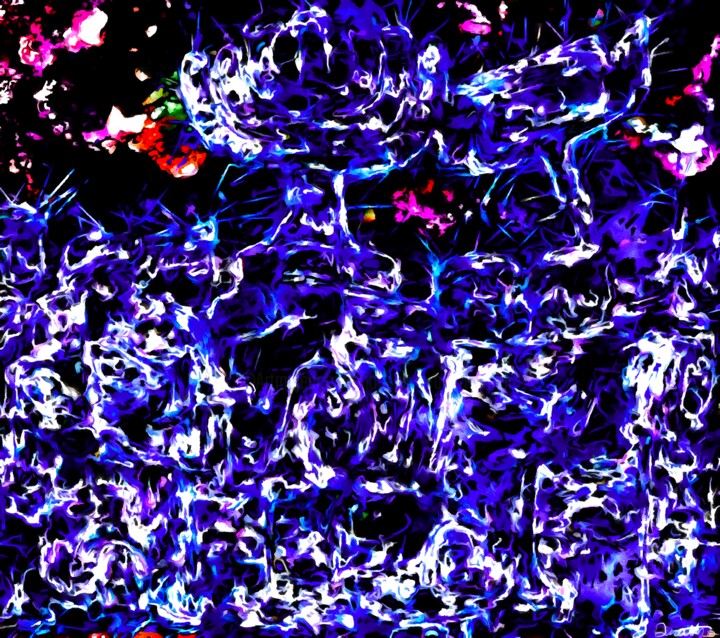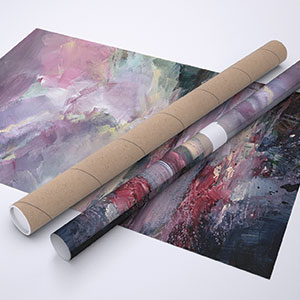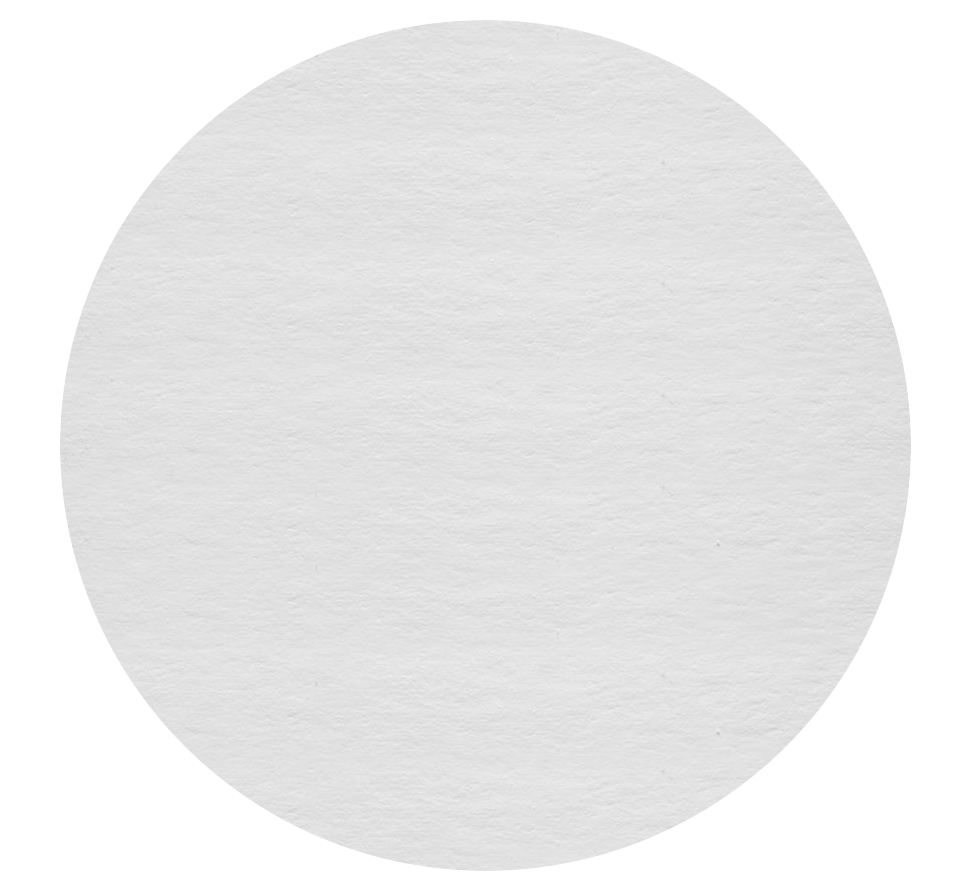
Judaea Capta Fiery Lioness (2023) Digitale Kunst von Joseph Anthony Quattromini
"Fine-Arts" Druck auf Papier
Es handelt sich um ein Verfahren zum Drucken auf Kunstdruckpapier mit sehr hochwertigen Pigmenttinten, das in sehr hoher Auflösung gedruckt wird. Der Konservierungsgrad ist aussergewöhnlich (über 100 Jahre), Qualität, Tiefe und Nuancenreichtum übertreffen den klassischen Fotodruck auf Argentic-Papier.

Glänzende Oberfläche
Abgesehen von seiner aussergewöhnlichen Dicke besteht das Faserpapier aus einer säurefreien Alpha-Cellulosebasis, die mit Bariumsulfat bedeckt ist, und einer mikroporösen Schicht, die die Pigmente beim Drucken absorbiert. Dieses Papier hat eine rein weisse Farbe und ist lichtecht. Es wurde speziell für Beständigkeit und Alterung entwickelt. Es wird von grossen Museen weltweit verwendet, da es eine hervorragende Auflösung bietet und tiefe und dichte Farben wiedergibt.
Kunstdruck "Fine Art" - Hochglanzlackierung auf Fasergrundpapier 325 g.

Unsere hochwertigen Drucke und Reproduktionen
ArtMajeur verwendet nur Naturpapiere mit neutralem pH-Wert, beständig und von hoher Qualität, ausgewählt von renommierten Papierherstellern!
Unser Masterdrucker achtet ständig darauf, sei es in Bezug auf die Farbkontrolle oder die Einhaltung der Grafikkette. Unser hoher Qualitätsanspruch ist ein wesentlicher Vorteil der gerahmten Kunstdrucke von ArtMajeur.
Für Künstler! Sie helfen Künstlern, von ihrer Arbeit zu leben. Sie erhalten jedes Mal, wenn Sie ihre Drucke kaufen, Tantiemen.
Über unsere DruckeErwerben Sie eine Lizenz, um dieses Bild für Ihre Website, Ihre Kommunikation oder den Verkauf abgeleiteter Produkte zu verwenden.
Usage: Weblizenz
| 1329 px | ||

|
1500 px |
| Abmessungen der Datei (px) | 1329x1500 |
| Einsatz weltweit | Ja |
| Verwendung auf Multiträgern | Ja |
| Verwenden Sie auf jeder Art von Medien | Ja |
| Widerrufsrecht | Nein |
| Max. Anzahl der Drucke | 0 (Zero) |
| Produkte zum Verkauf angeboten | Nein |
Sofort nach dem Kauf herunterladen
Dieses Bild steht zum Download mit einer Lizenz zur Verfügung: sie können sie jederzeit herunterladen.
Einschränkungen
Alle Bilder auf ArtMajeur sind von Künstlern geschaffene Original Kunstwerke, alle Rechte sind strengstens vorbehalten. Der Erwerb einer Lizenz gibt das Recht, das Bild unter den Bedingungen der Lizenz zu nutzen oder zu verwerten. Es ist möglich, geringfügige Änderungen vorzunehmen, wie z.B. das Bild neu auszurichten oder zu fokussieren, damit es perfekt zu einem Projekt passt. Es ist jedoch verboten, Änderungen vorzunehmen, die das Originalwerk in seiner Integrität beeinträchtigen könnten (Änderung der Formen, Verzerrungen, Ausschneiden, Änderung der Farben, Hinzufügen von Elementen usw.), es sei denn, es liegt eine schriftliche Genehmigung des Künstlers vor.
Sonderlizenzen
Wenn Ihre Nutzung nicht durch unsere Standard Lizenzen abgedeckt ist, kontaktieren Sie uns bitte für eine benutzerdefinierte Lizenz.
Kunst Bilddatenbank-
Diese Arbeit ist eine "Open Edition"
Digitale Kunst,
Giclée / Digitaldruck
- Masse Verschiedene Grössen erhältlich
- Mehrere Möglichkeiten (Kunstdruckpapier, Drucke auf Metall, Leinwand)
- Rahmen Rahmung zur Verfügung (Schwebender Rahmen verglast, Rahmen mit Acrylglas)
- Zustand des Kunstwerks Das Kunstwerk ist in einwandfreiem Zustand
- Kategorien Abstrakte Kunst Weltkultur
The Arch Of Titus, in Rome, stands in front of the Colosseum and commemorates the victory of Vespasian over Judea, which is when and where he was declared emperor, and depicts captive Jews carrying the golden Menorah (lamp stand/ candelabra) of the Jerusalem Temple, during his Triumph. The Menorah was placed in the Temple Of Peace, until the invasion of the Vandals, after which it went missing. It is believed by some that the Menorah was returned to Jerusalem and once kept within the Nea church, as Christian restitution to the G*d of Israel.
The captive Jews brought with them the skills that they employed in the building of the Colosseum itself, the greatest structure of Roman engineering, and they were soon able to buy their freedom and contribute to Roman society as citizens, making up between six and 10% of the total population of Rome. There were 11 synagogue communities within the city of Rome, some from as early as 200 BCE. The Jewish Roman community is the longest standing synagogue community in the world, at 2,200 consecutive years. An average of 45-70% of Roman era Italian DNA is found in Ashkenasy (Eastern European Jewish) DNA.
It was Roman Emperor Hadrian who named Judea “Palestine”, in 135 CE, after defeating the final but temporarily successful Bar Kochba messianic Jewish uprising that liberated Judea, but not Jerusalem, for three years. “Palestine” was a European term referring only to Judea under imperial occupation, not a nation, state, country or people, and not a term officially used recognized by any Arab or Muslim imperial occupiers who always ruled from their foreign capitals in Syria and Anatolia, just as Rome or any other imperial power never established its capital in Jerusalem. The Quran and the Imperial Islamic occupations referred to Judea and Jews, a nation and its people, as “Israel”, and used the menorah as the symbol on the coins minted in Islamic-occupied Israel. European maps of “Palestine” always described the area as “the holy land, Israel & Judea”, (under imperial occupation) which was also the only loosely connected Arabic use of the word “Falastin”, which never referred to a people, only the Israelite-Jewish holy land under imperial occupation.
The fall of Rome marked the end of the official imperial use of the term “Palestine” by any rulers of the region, until the 1922 League of Nations Mandate, administered by the British, for the restoration of the Jewish national homeland, which was intrinsically Zionist, meaning, “legal, internationally recognized, Jewish independence”, which includes Judea and Samaria, as well as Perea (trans-Jordan) according to the United Nations Charter, by virtue of adopting the League of Nations mandate principles that were based on previous, historic provincial borders, and because partition was rejected by the Arab and Muslim population, 70% of whom arrived illegally during the mandate era, while the British illegally banned Jewish immigration, so that they were sent to the concentration camps that the British-appointed Mufti of Jerusalem helped to devise. Arab ethno-states were first established by these same mandates for local independence, after the Western defeat of the Ottoman Empire, as were Muslim states partitioned based on religious majorities, such as Pakistan and Bangladesh being partitioned from what was only ever previously India.
Verwandte Themen
Quattromini has produced 17 photo books of Jerusalem, Israel, Palestine, Jordan, Galicia, Spain, NYC, NJ, & the USA. The photographer/ digital painter specializes in panoramas, cityscapes, landscape, architecture and ancient spiritual sites. His works often include local people’s traditions, portraiture and journalistic subjects. Quattromini meticulously creates his unique digital paintings, based exclusively on his original photographs.
Early influences on Quattromini’s creative development were his remarkably musically talented, self-taught father, a U.S. Army veteran Fire Dept. Captain and artistically gifted mother, a paralegal and Catechism teacher, and two neighbors. The first, photographer Artie Van Blarcum, was the subject of George Tice’s biography that includes a photo of Quattromini’s childhood home. The other was a ceramics painter named Jackie, with whom the young photographer and future artist began a weekly painting class for neighborhood children. Quattromini and Jackie were both born to Ashkenas Jewish mothers and raised Christian, Catholic and Presbyterian respectively, shaping the mixed experiential perspective evident in much of Quattromini’s works possessing deeply sacred meaning to the identity of entire peoples and to many people’s individual identity.
As an academically aspiring high school, Quattromini endured the tragic, sudden death of his beloved mother, followed by his grandmother’s consequent demise, triggered by heart trauma inflicted from the shock of suffering witnessing her youngest child’s death. In the aftermath of that life altering experience, upon returning from touring and photographing Spain, Quattromini was gifted the honor of administering the Holy Eucharist during the historic, televised Papal Mass given by Saint Pope John Paul II, in Giants Stadium, NJ, in 1995. He took Saint Peter’s University courses, while attending night and weekend rabbinic studies, followed by rabbinical college, in Jerusalem’s Old City, where the artist’s passion for learning about the history of human identity and his interest in photography converged, emerging as a calling, with the purpose of contributing to the generating of a critical mass of positive change, to foster, achieve and sustain peace, harmony in unity, wholeness, necessitating all peoples’ inclusion in the equal protection of their humanity’s dignity.
Quattromini has remained involved in organizations that provide him with the opportunity to learn, travel and volunteer, facilitating his devotion to improving as an artist and, most essentially, as a person of integral substance, as he defines only by being of service to others. That endeavor includes working for The Queen of Pop, through teaching in NYC after school programs pioneered by Madonna’s children's charity, beginning in 2007. The artist also has a special fondness for allowing fate to present him with the blessing of providing pilgrims free tours of the humble, Holy City of Jerusalem.
-
Nationalität:
VEREINIGTE STAATEN

- Geburtsdatum : 1978
- Künstlerische Domänen: Werke von Künstlern mit zertifiziertem Künstlerwert, Werke von professionellen Künstlern,
- Gruppen: Zertifizierte Künstler Professioneller Künstler Zeitgenössische Amerikanische Künstler







